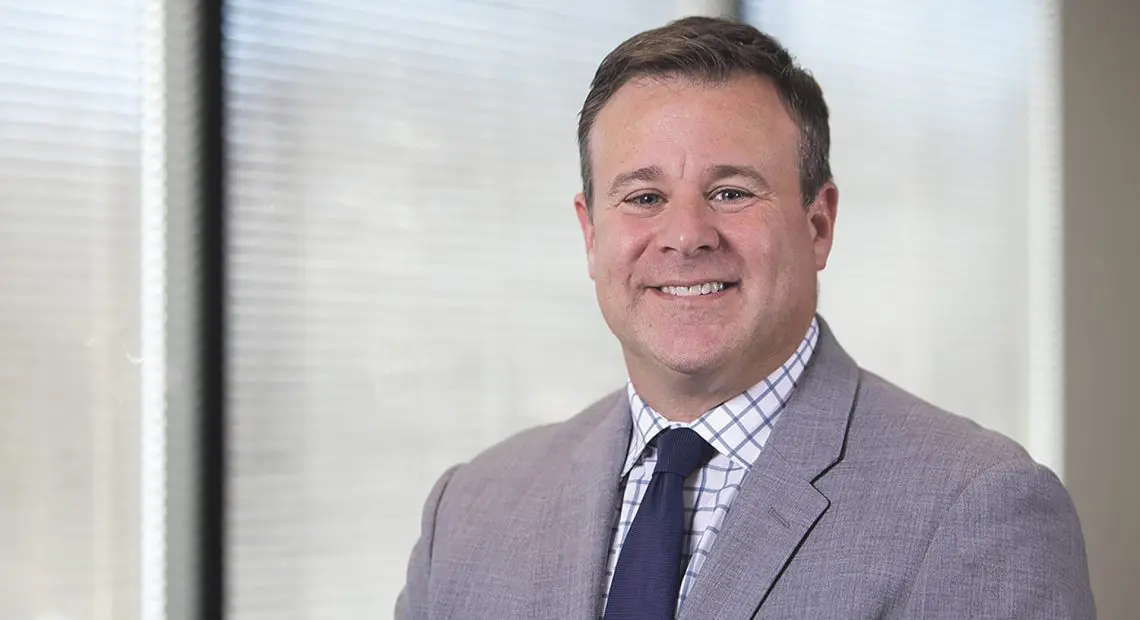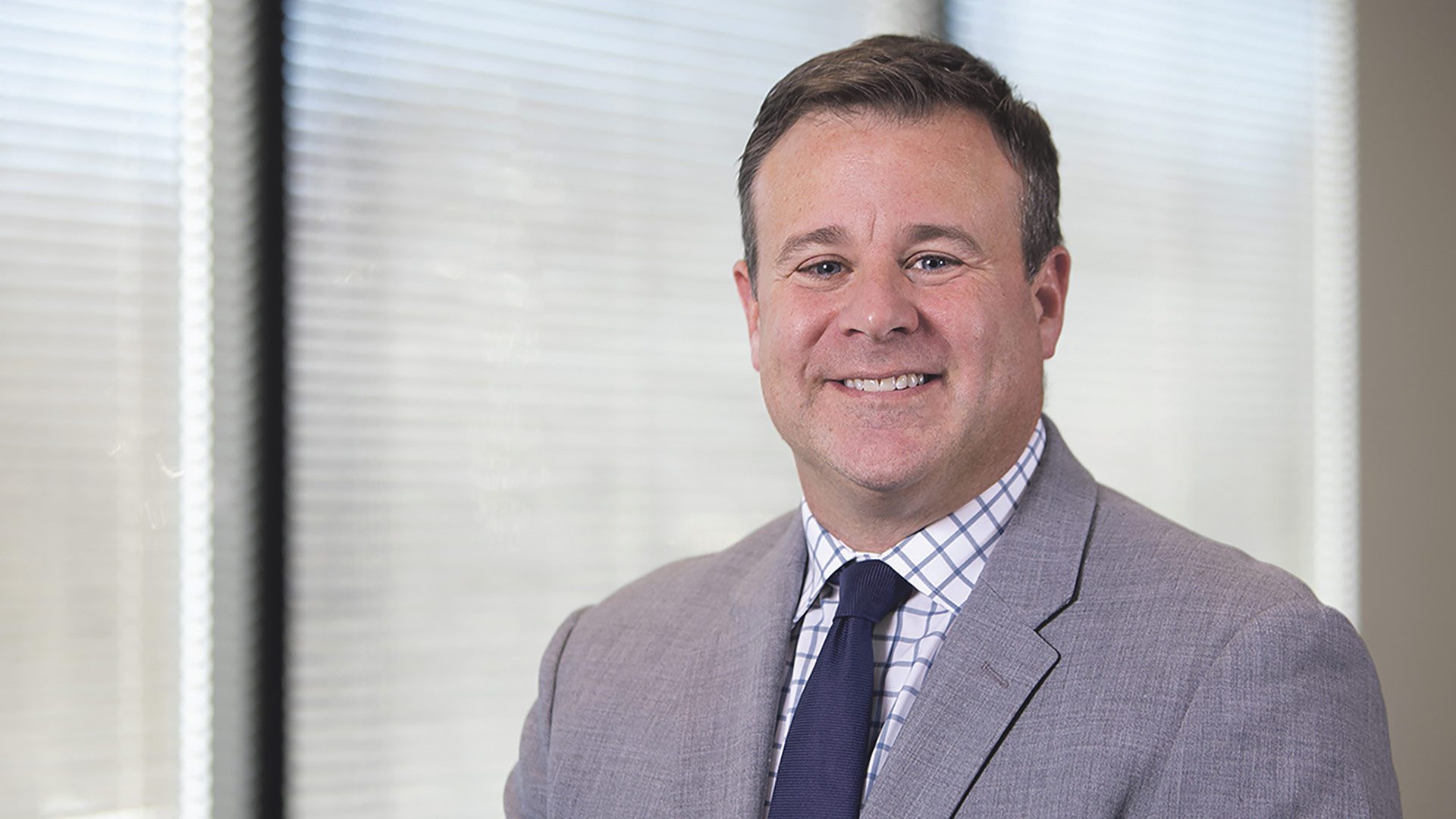
PeoplesBank, Cornerstone Merge Holding Companies
Coming Together

Brian Canina says the merger with Cornerstone Bank’s holding company will provide both institutions with opportunities to become more efficient — and more competitive.
Brian Canina says that, while it’s being called a merger, in reality, it’s more of a partnership.
He was referring to the recent announcement that Holyoke-based PeoplesBank, which he serves as president, and Worcester-based Cornerstone Bank will combine their holding companies — PeoplesBancorp, MHC and SSB Community Bancorp, MHC, respectively — into one entity, which will take the former’s name.
This transaction, the latest to merge multi-bank holding companies, will create an entity with approximately $6 billion in assets, said Canina, a number that brings with it certain competitive advantages and a stronger ability to withstand increasingly thin margins in this sector.
“What we’re trying to do is create some scalability,” he explained. “Through the holding company, we can look for ways we can work together and share the back-office services to become more efficient through size.”
Overall, and outwardly at least, not much will change with this partnership, said Canina, noting that both banks will continue to operate under separate names and brands for the foreseeable future. All account information, branch banking, and digital access will remain the same for both banks throughout the transaction.
It will be, as he put it succinctly, “business as usual.”
Behind the scenes, though, the merger will provide both institutions with opportunities to become more efficient and, in many ways, leverage each other’s markets.
“The banking industry is pretty transparent in terms of being able to see the cost of goods sold,” he explained. “If you look at what the current market interest rates are for deposits, and what people are looking to get for a savings account or CD, and then you compare that to what the market prices are for a 30-year mortgage or a commercial loan … you can see the spread between the two and also see how thin that is.
“As a mutual bank, we can’t raise capital from stock issuances; we earn our capital through hard work and bottom-line earnings. As a result, it can be more challenging for a mutual bank to stay up to speed with inflation, the cost of wages, and competing with stock banks that have more access to capital.”
“The only way to continue to manage like any other business that has shrinking profit margins is to become more efficient in your operations,” he went on. “And that’s where this opportunity is important; you need size in order to become more efficient, and that’s the same in any business.”
Strength in Scale
Canina said this transaction reflects a trend in the industry: a growing number of mergers, or partnerships, among mutual banks and their holding companies, something that wasn’t seen as much years ago, when more mergers involved publicly traded institutions.
And they’re coming about out of necessity, he went on, adding that the size and scale they generate amount to better opportunities to compete with those larger stock banks.
“As a mutual bank, we can’t raise capital from stock issuances; we earn our capital through hard work and bottom-line earnings,” he explained. “As a result, it can be more challenging for a mutual bank to stay up to speed with inflation, the cost of wages, and competing with stock banks that have more access to capital. But we do it because we want a mission that’s focused on our communities, our customers, our employees, and giving back — and not about shareholders.
“So I think you’re going to see more of these mutual-to-mutual mergers,” he went on. “We’re starting to see them already, but I’ll think you’ll see more of them because they need to partner with each other to maintain that mutual status — and to remain relevant.”
Elaborating, he said that, when it comes to such transactions, with no stock to acquire, it’s not as much about dollars as it is about culture. And these two institutions are very similar in that regard.
“We provide the same services and technology as the larger regional and national banks, but we’re also giving back to the community, which a lot of those banks don’t do,” he went on. “That’s what we do, and when we partner with other like-minded mutual banks, we can start really competing — and giving back more to the community.”
Indeed, as noted earlier, bringing these holding companies together creates a $6 billion entity — PeoplesBank has roughly $4.4 billion in assets, and Cornerstone is a $1.6 billion institution — which creates more economies of scale and, thus, opportunities to increase overall profits, Canina explained.
And while it will be business as usual for the time being, the two banks will, over time, seek out ways to share best-in-class technologies as well as resources to become more efficient.
“Over time, we’ll look for opportunities to share employees and to share technologies to be more efficient, as a larger organization would,” he told BusinessWest, emphasizing, again, the importance of scale in banking today.
Promising Partnership
This quest for size helps explain other mergers of holding companies, Canina said, adding that there have been several over the past few years, including a few involving bankESB and its holding company, Hometown Financial Group Inc.
Such mergers enable institutions, often on the other end of this state or in other states, to build on each other’s success in their respective markets. It’s the same with PeoplesBank and Cornerstone.
“We can’t build 11 banking centers in the Worcester County area, and Cornerstone can’t build 21 banking centers in the Western Mass. and Northern Connecticut markets,” he explained. “But by partnering, we’re able to leverage each other’s markets and find ways to enhance each other’s franchise values in those markets by partnering together.
“We don’t necessarily need to merge with Cornerstone — we’re financially strong, and we’re doing great,” he added. “It’s more of the opportunity and what we can do better with a partner.”




